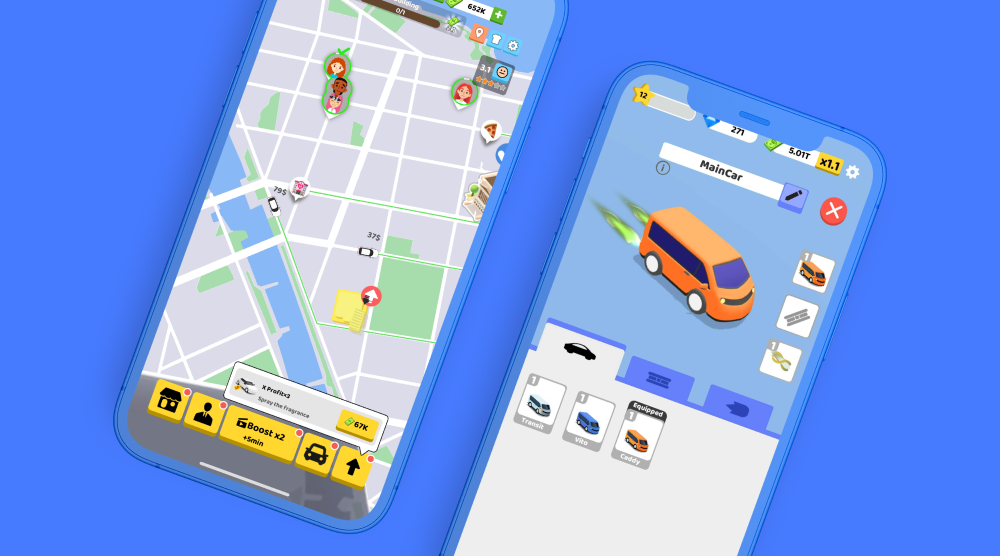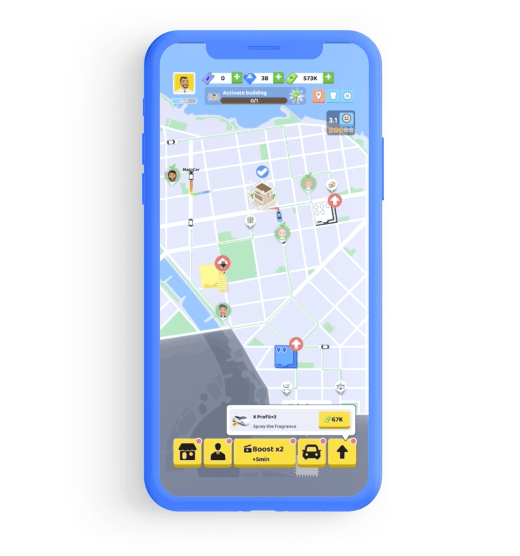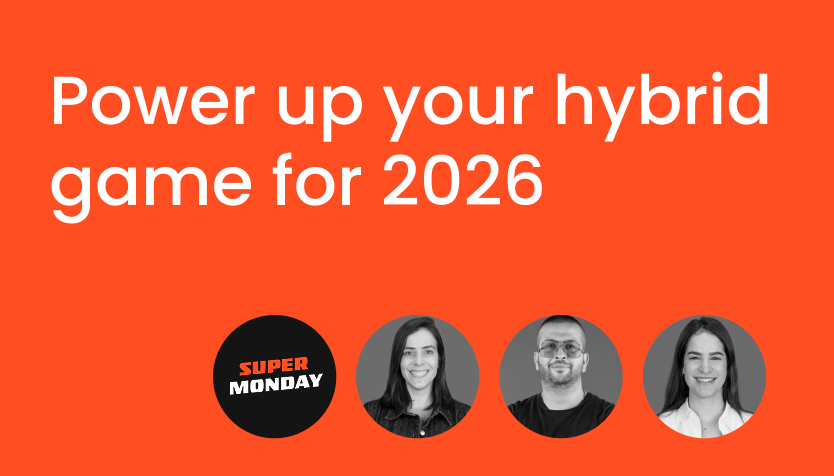Running your own business in real life is not all fun and games. But with simulation games, players gain a rewarding entrepreneurial experience without any of the stress. Within this exciting genre, the idle resource management subgenre distinguishes itself by providing players with the thrilling challenge of expanding their venture with limited resources. This means, players need to decide how to strategically use scarce resources to ensure their business thrives, grows, and expands.
This subgenre is currently exploding. As an example, Supersonic’s Pick Me up Idle currently boasts over 1 million downloads on the Google Play Store and is top-ranked globally. The game gives players the opportunity to progress from a taxi driver to an owner of a successful cab venture, expanding across multiple locations.
So how did this simple concept become a massive success? We’ll share some of the top tips and tricks you can take away from Pick Me Up Idle to create an idle resource masterpiece of your very own.
1. Hook players with intuitive UI
In order to grab your players, they first need to understand how the game works and most importantly for this subgenre, they need to understand how various upgrades will help them turn their new venture into a huge success.
Your layout should be simple and straightforward, with prominent actions such as hiring and managing easily accessible from a centralized dashboard. Since upgrades are central to idle resource management games, your tutorial should explain the main mechanic. For more complex quests or tasks, provide tooltips to ensure your players have the context they need to succeed. Finally, a little feedback goes a long way–give players the satisfaction of cool visuals or audio effects when they complete tasks or make an upgrade. This positive feedback loop will encourage your players to perform the right actions.
2. Aim for simple and clear gameplay
For idle resource management games, it's crucial to have gameplay that's clear and easy to understand. Unlike other simulation games that focus on exploring, this subgenre is all about growing your area of control. To keep your players engaged and on the right track, they need to instantly grasp that expansion is their main goal and know exactly how to achieve it. This is why a simple and straightforward gameplay loop is so important.
A typical gameplay loop for idle resource management games works like this:
- Upgrading units: Enhance your units to improve their efficiency and capabilities.
- Get rewards: Earn rewards based on the improved performance of your units.
- Expand zone: Use collected rewards to unlock new areas and broaden your control.
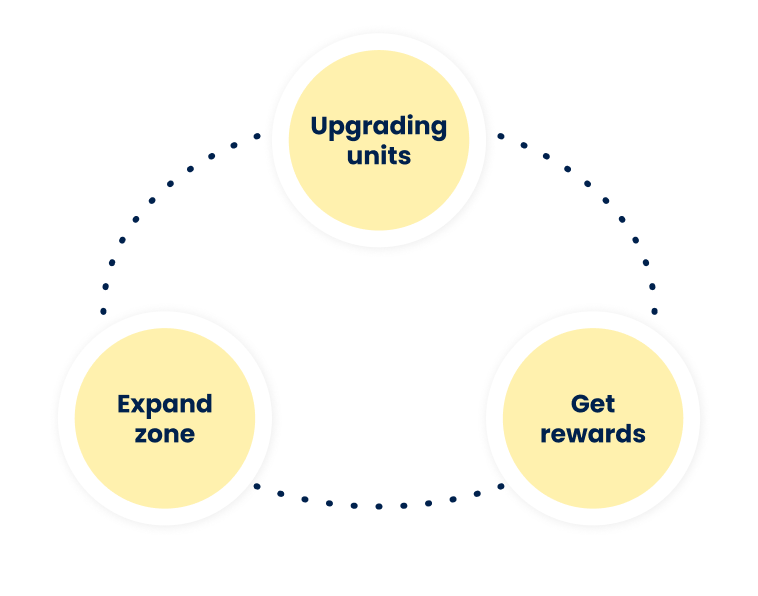
Here’s how this looks in Pick Me Up Idle:
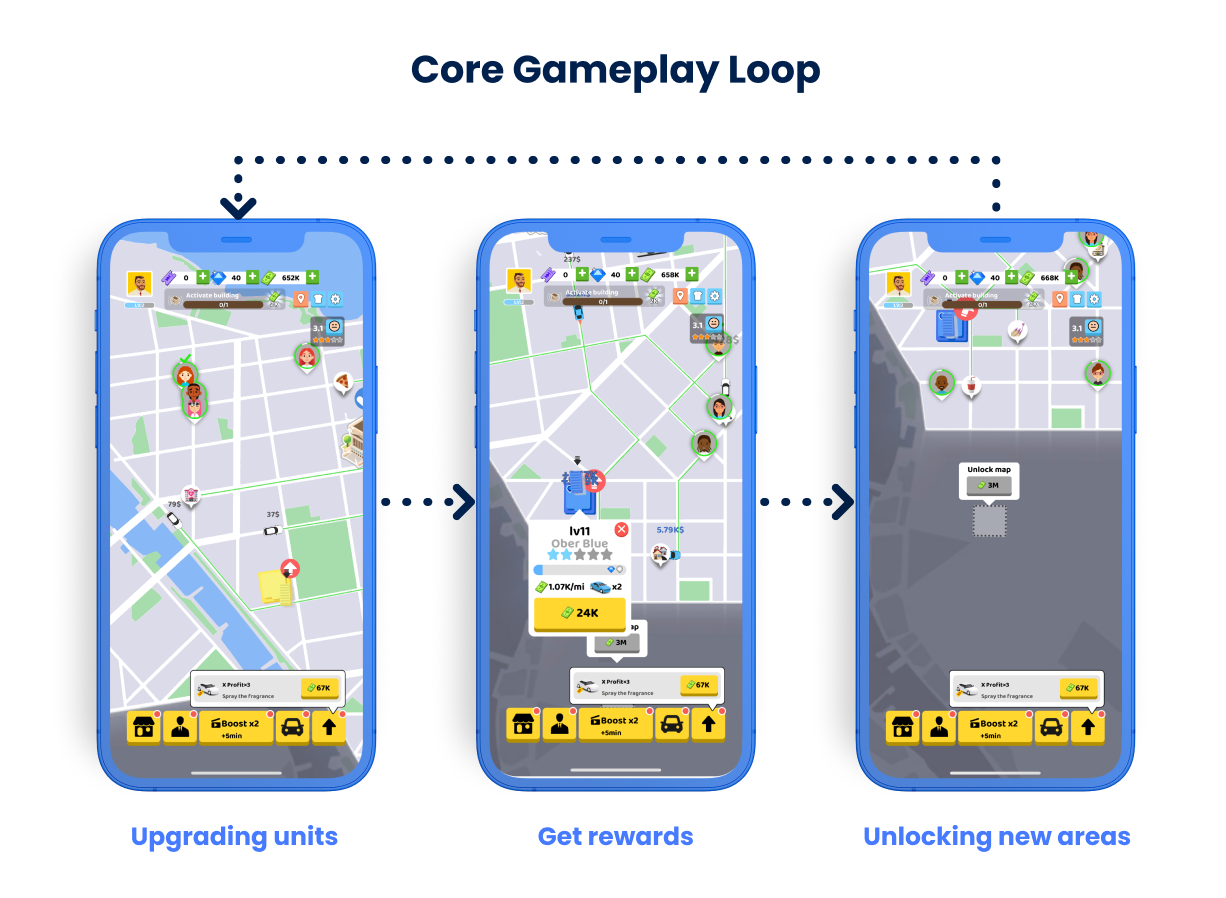
In Pick Me Up Idle, the main goal for players is to pick up passengers quickly to keep them happy and maximize earnings. To boost profits, players need to invest in upgrading their station, which may cost more in-game currency but results in better production and higher earnings.
As players improve their station's efficiency and earn more currency, they can unlock new areas and expand their control. This cycle of upgrading and expanding is central to the game. Ultimately, players aim to grow their transport network, manage more cabs, and extend their services to multiple cities. The more they expand, the more they can increase their profits and enjoy the game.
3. Use upgrades to fuel progression
Who doesn’t love an upgrade? In idle resource management games, upgrades aren't just a 'nice to have'—they're at the heart of the fun, driving the main system of progression. Unlike other simulation games, resource management challenges players to find the right balance between different elements all vying for the same scarce currency.
With numerous upgrade options to choose from, players have to carefully decide which ones will help grow their business most effectively. And because the currency is limited, players need to watch their spending closely. This creates a sense of urgency that makes the game both fun and engaging, adding an exciting layer of strategy to every decision.
Pick Me Up Idle exemplifies this through the many upgrades available within the game. Players can upgrade their car to increase profits and enhance productivity. And with the same limited currency, they can also choose to hire managers to help grow the taxi business. These managers help players boost productivity so they have more chances to earn tips and increase multipliers.
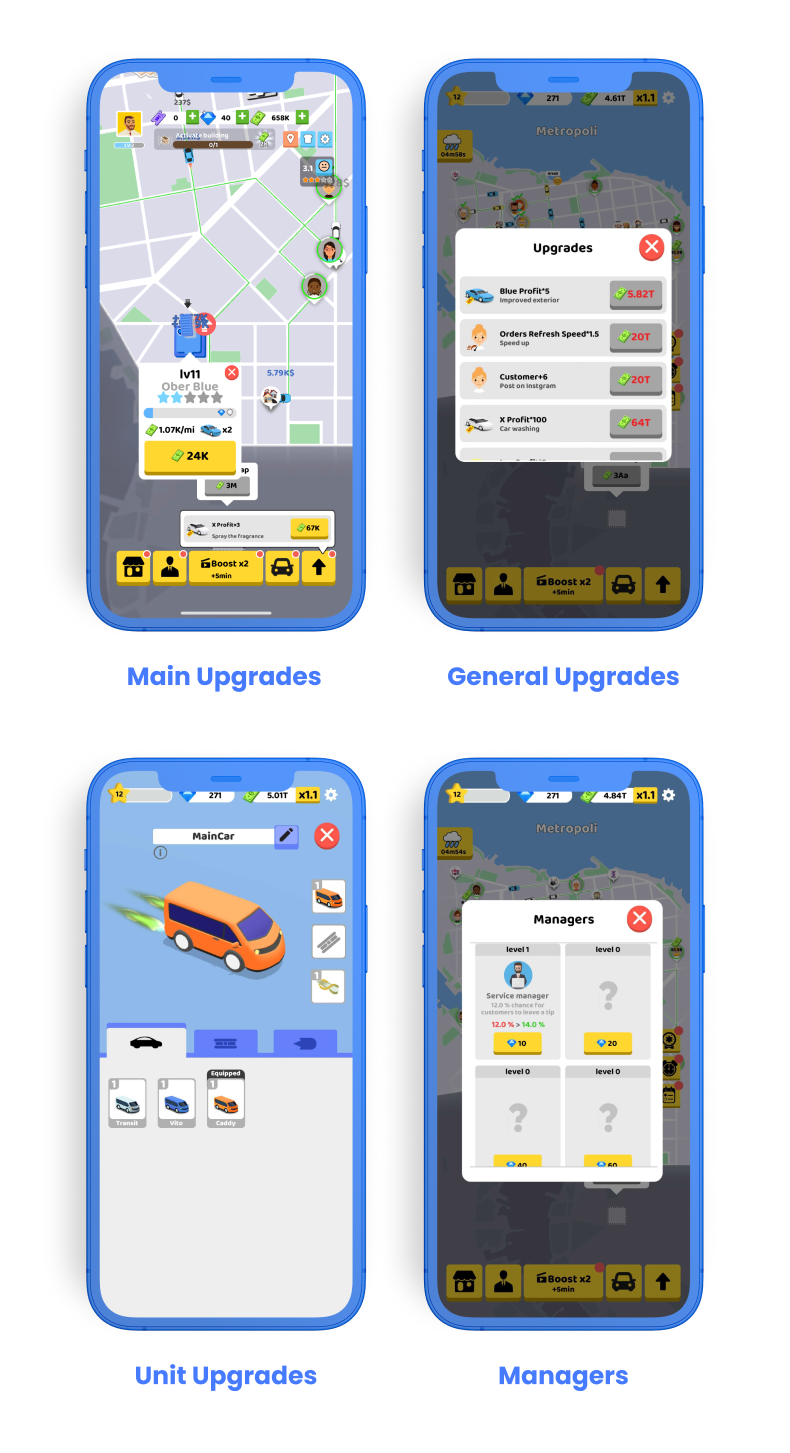
4. Drive monetization with limited resources
In idle resource management games, the emphasis is on boosting productivity rather than time management as is common in other simulation games. To drive players to make purchases, upgrades are often aimed at the areas where players need a little extra help to be more productive and profitable. These games usually monetize through two main methods: offering bundles that provide the much-needed in-game currency and bundles that boost profits or increase productivity rates.
For example, in Pick Me Up Idle, players can choose between general bundles, loot boxes (unit upgrades), and main resource bundles. These are offered at just the right moments when players’ currency is running low and they want to upgrade faster.
Here’s how it works. When things slow down, the game offers the chance to speed up upgrades by watching a rewarded video. After they’ve watched these videos and exhausted their free options, players are shown special bundles in the shop to help them optimize their productivity even more. This makes the game both strategic and fun, with plenty of opportunities to keep progressing smoothly.
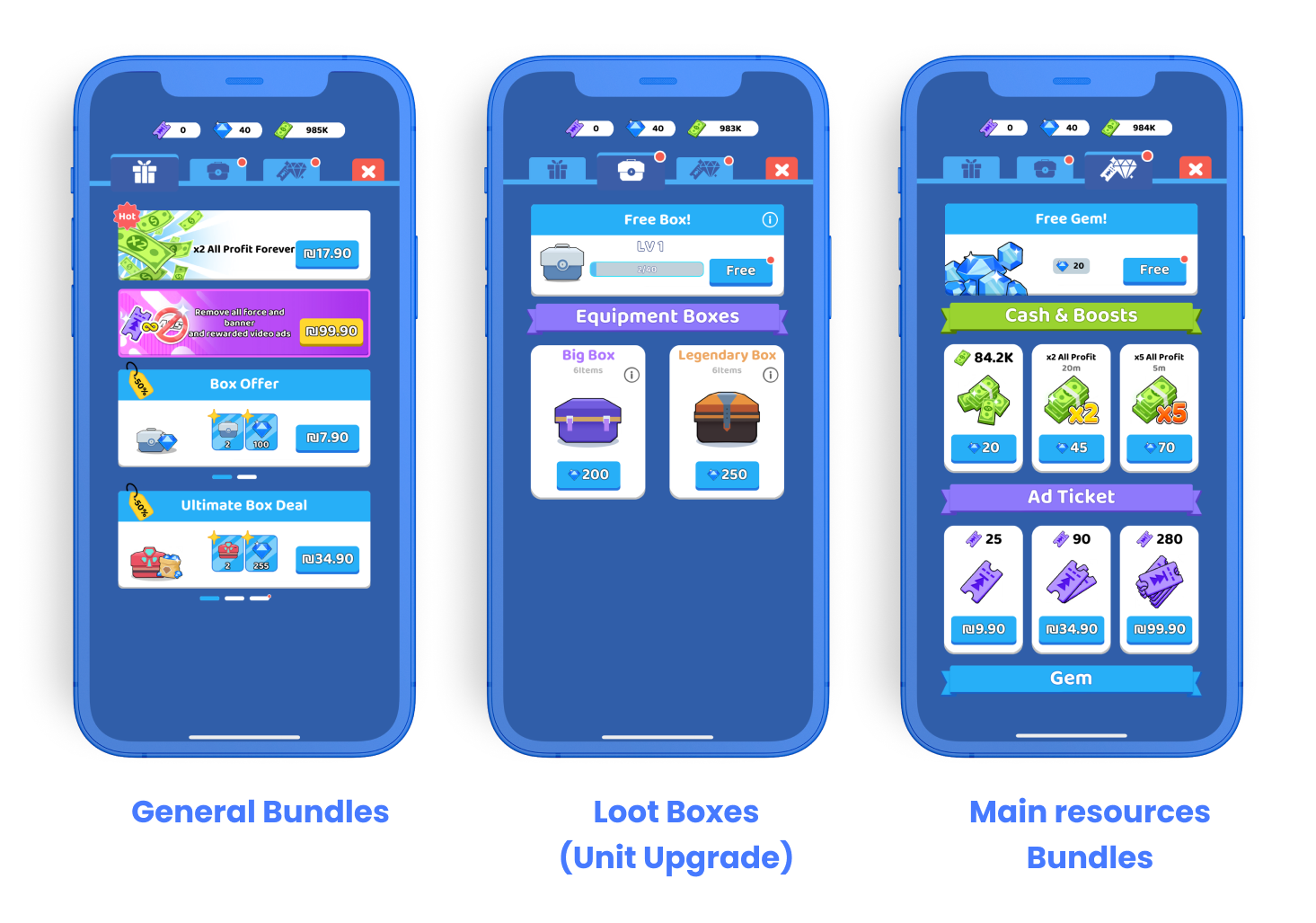
Start creating your idle resource management masterpiece
Give your players the opportunity to create their own thriving business right from their phone. Idle resource management games turn entrepreneurship into a fun and epic adventure that combines strategic management of resources with the desire to expand and grow. They’re also an extremely popular and profitable option for studios looking to jump into the simulation subgenre.
Let's put these tips to good use
Publish your game with Supersonic
